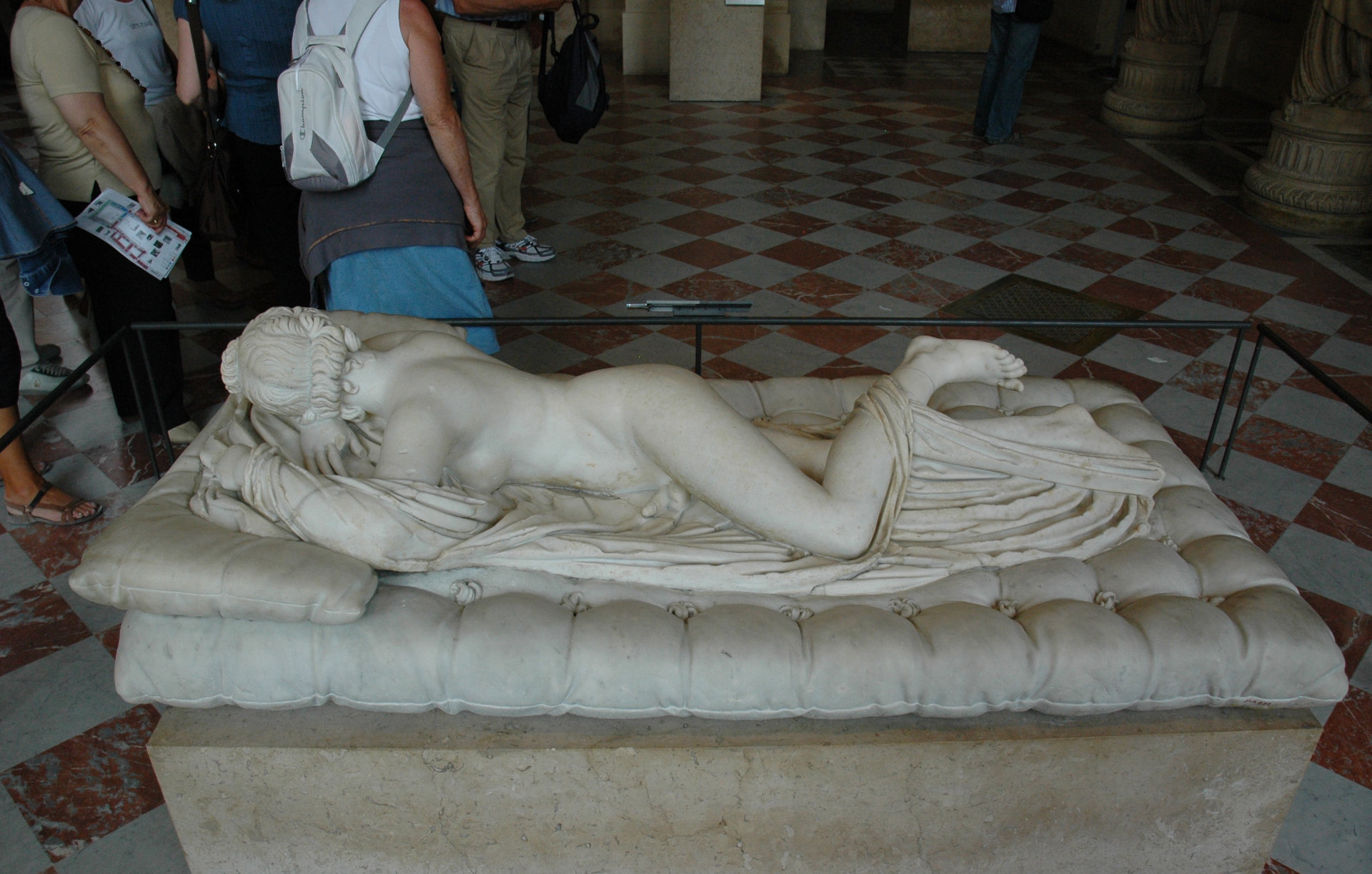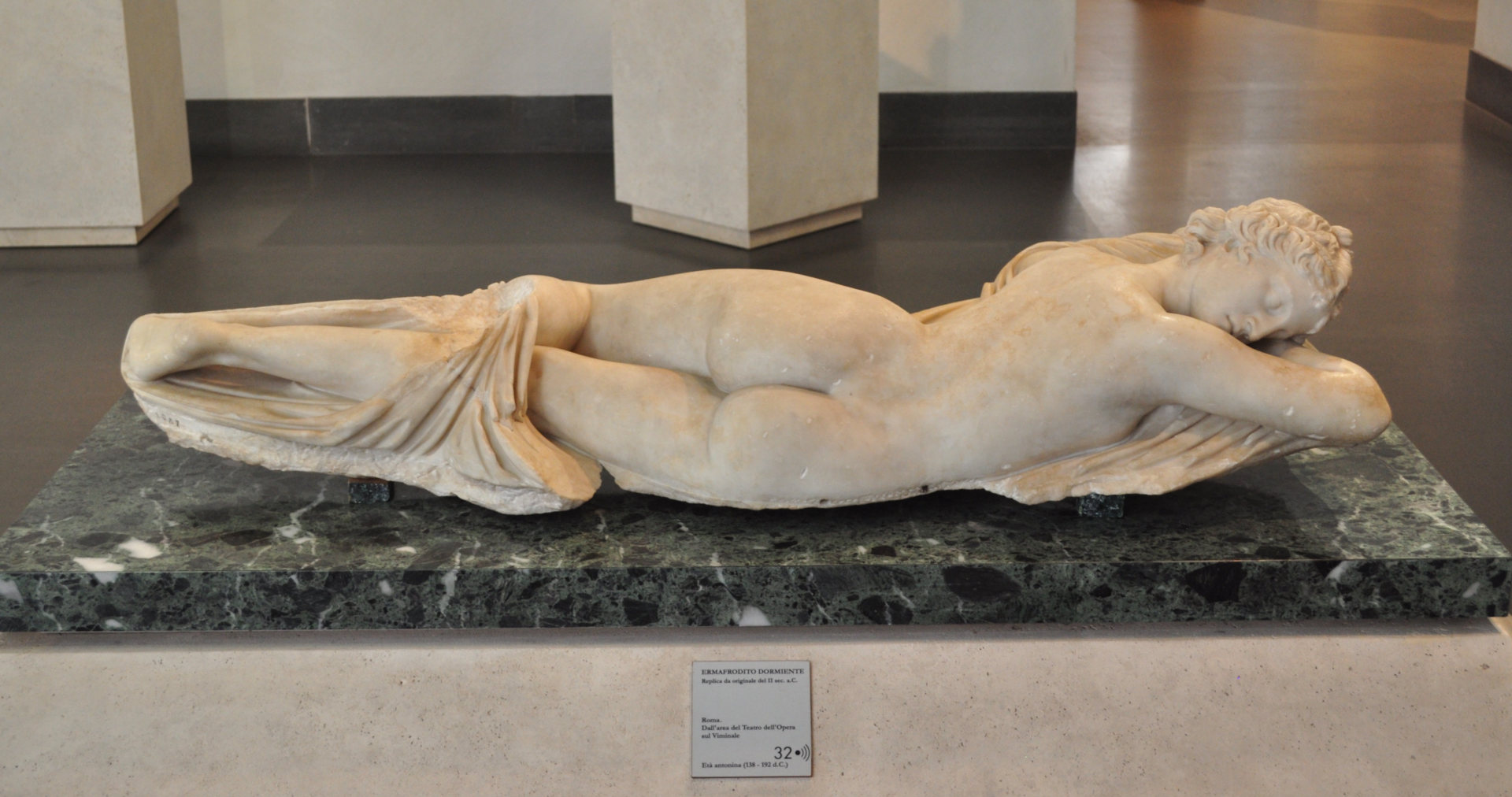Start talking, not gawking
If you’ve seen my newest video, you know that ancient statues of Hermaphrodite have a lot to teach us. They help us reflect on both ancient and modern perceptions of gender and bodies. Ideally, how they are displayed in museums would leverage this power to start conversations on these topics. They could enrich museumgoers’ lives considerably.
Yet no museum I know seizes this opportunity. (Perhaps you know of one! Share it in the comments below!) Instead, the statues are given little context or mediation to help viewers understand and value them. This means that they are often surrounded by tourists taking photos to show their friends, snickering about a body type they consider funny, and perhaps arousing. Large groups snapping photos of the famous “sleeping Hermaphrodite” statue in the Louvre are positively disturbing. Body shaming, bigotry, and sexual assault should be countered by museums, not encouraged. Even visitors who are deeply interested in the statue’s significance are left asking, Is this really just a funny picture? Is that all that Hermaphrodite was in antiquity too?
Museums can lead the way!
The change needs to start with museum presentation before we can expect it to spread through our society. Museums, after all, are the places for people to learn about living on this planet. Museums must stop calling the sculpture of a satyr sexually assaulting Hermaphrodite as “playful” and “titillating.” They must stop referring to Hermaphrodite as “he,” and stop exhibiting Hermaphrodite statues in places that encourage viewers to fetishize these bodies as implicitly sexualized or freakish. Instead, Hermaphrodite needs to be displayed with honesty, sensitivity, and encouragement to reflect.
Further Reading
- This excellent essay on being transgender combines a first-person perspective with a scholar’s view of ancient sculpture – and revising this view based on personal experience.
- A chapter in the book Naked Truths. Women, sexuality and gender in classical art and archaeology presents the theory that Hermaphrodite was a cult figure. See the chapter “The Only Happy Couple. Hermaphrodites and Gender” by Aileen Ajootian (preview available here).
- The book Looking at Laughter by John Clarke is a foundational work for understanding Roman humor. Beware: this may irredeemably lower your opinion of the Romans forever…
- This article admirably addresses the ongoing culture of sexual assault in art, from antiquity to the present. Unfortunately it is not freely available, but perhaps some communication with the author or press could change that: Ethics and Erotics: Receptions of an Ancient Statue of a Nymph and Satyr
- The fairly new book Gender, Identity and the Body in Greek and Roman Sculpture includes a chapter on Hermaphrodite. It is a fairly standard introduction to the artworks and concepts, but not quite as progressive as one might have hoped.
Have you seen Hermaphrodite artworks in museums? Share your thoughts in the comment section below!


